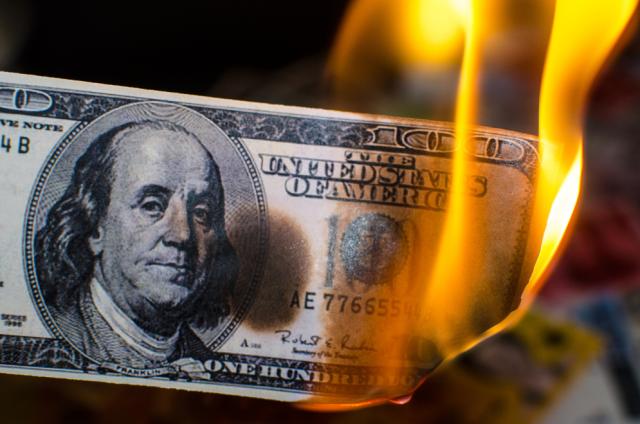
(Source: Shutterstock.com)
[Editor's note: This story was written prior to OPEC’s pact with Russia falling apart, the subsequent oil price war between Russia and Saudi Arabia, the spread of coronavirus into a global pandemic and the resulting oil market collapse. A version of this story appears in the March 2020 edition of Oil and Gas Investor. Subscribe to the magazine here.]
Just a couple of months into the year, M&A already looks to be in for a rough 2016. You remember 2016.
Erratic, unpredictable commodity prices have upended what should have been a lackluster year and potentially tipped it into the 2014 version of “Hey, is OPEC doing anything after Thanksgiving?”
Deloitte’s upbeat spin on 2020 M&A: “More of the same, but a little bit different,” according to its Feb. 11 report.
Maybe not even that.
The firm said that the giant headline mergers of 2018 and 2019—looking at you, Occidental Petroleum Corp.—could contribute to divestitures. More consolidation, along the lines of Callon Petroleum Co. buying Carrizo Oil & Gas Inc. and Parsley Energy Inc. purchasing Jagged Peak Energy, seemed possible.
Alas, the world slightly lost its mind shortly thereafter.
As Hess Corp. CEO John Hess said at the Argus Americas Crude Summit in February, the world is “awash in oil right now,” and the Wuhan coronavirus is a “major headwind.” (If you are asking, “What’s a coronavirus?” return immediately to your bunker.)
RELATED:
Balancing Acts: Offshore, Shale
The coronavirus will either be a wildly overblown threat to oil and gas prices or a sign of the end times, according to analysts. Granted, China on its own hasn’t been a real market for U.S. crude since the tariff tantrums began. In 2019, annual U.S. oil exports to China fell by 64%. However, oil exports to South Korea, Taiwan, India and other Asia and Oceania nations have cumulatively increased by 472,000 barrels per day (bbl/d) in the first half of 2019, according to the U.S. Energy Information Administration.
The coronavirus is already playing havoc with that, even after accounting for the initial patella-dislocating knee-jerk by the market. China’s Wuhan Province is linked to the supply chain of hundreds of major manufacturers, including carmakers, Bloomberg reported. On Feb. 8, OPEC recommended an extension of its current production quotas through the end of 2020 and mulled a further cut of 600,000 bbl/d.
Such a reduction by OPEC would be “nothing like enough, but about as much as they can credibly cobble together after a fractious December meeting,” Paul Sankey, managing director at Mizuho Securities USA LLC, said in a Feb. 10 commentary.
Andrew Fletcher, senior vice president of commodity derivatives for KeyBank National Association, seemingly cried uncle the same day. He observed that crude and natural gas prices were taking it on the chin.
“The coronavirus needs to burn out,” Fletcher said. “OPEC-plus need to be on the same page. That is the answer for crude. Natural gas is about weather, which is absent. If these low prices persist, producers will have to shut in gas or worse.”
So, no, not a good start to the year. Need more proof? It’s the Environmental Protection Agency’s 50th birthday.
It doesn’t take a yarn winder to measure the upshot of price turmoil. As Opportune LLP’s Amy Stutzman and Lynn Loden wrote in February, companies such as Chevron Corp., Royal Dutch Shell Plc and Range Resources Corp. have announced likely impairments in their next earnings reports. However, it’s guaranteed that even after writing down their assets, they’ll still remember what they paid for them. And so the bid-ask dance continues.
“Similarly, privately held companies are facing the same issue in preparing financial statements to comply with debt covenants and investor reporting requirements,” they wrote, adding that oil futures through 2023 indicate further price declines are likely.
“Due to these price declines, some oil and gas reserves are no longer economically viable,” they said.
Translation: Whatever low-ball offer an E&P was grudgingly considering just got lower.
Worth noting: Oil prices were already starting 2020 in the hole. Brent and WTI prices were both down $7/bbl compared to 2018.
But leave it to Hess to brighten up the world. Apparently catching the world by surprise, Hess told a Houston audience that shale resources aren’t infinite after all. Eagle Ford production appears close to a plateau, while the Bakken will hit peak production within the next two years before tapering off. The Permian Basin, he said, would “plateau in mid-decade and is already facing well interference issues,” he said.
Shale is being recalibrated, Hess argued, to win back the “hearts and minds of investors” by moving from “drill baby drill” to “show me the money.”
Or, to borrow another famous quote, “I’m the king of the world! … Glug, glug, glug.”
Recommended Reading
How Generative AI Liberates Data to Streamline Decisions
2024-07-22 - When combined with industrial data management, generative AI can allow processes to be more effective and scalable.
TGS Starts Up Multiclient Wind, Metaocean North Sea Campaign
2024-05-07 - TGS is utilizing two laser imaging and ranging buoys to receive detailed wind measurements and metaocean data, with the goal of supporting decision-making in wind lease rounds in the German Bright.
Honeywell Bags Air Products’ LNG Process, Equipment Business for $1.8B
2024-07-10 - Honeywell is growing its energy transition services offerings with the acquisition of Air Products’ LNG process technology and equipment business for $1.81 billion.
TGS Awarded Ocean Bottom Node Data Acquisition Contract in North America
2024-07-17 - The six-month contract was granted by a returning client for TGS to back up the client’s seismic data capabilities for informed decision making.
PGS Gets Greenlight to Begin Surveying for Petrobras 4D Contract
2024-05-30 - After a long permitting process, PGS has secured the last permit needed to begin its large 4D survey contract with Petrobras at the Barracuda-Caratinga field offshore Brazil.






